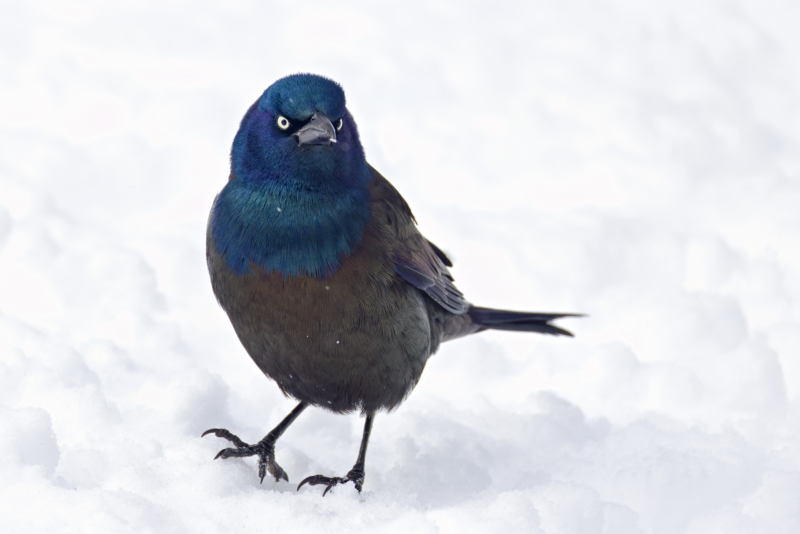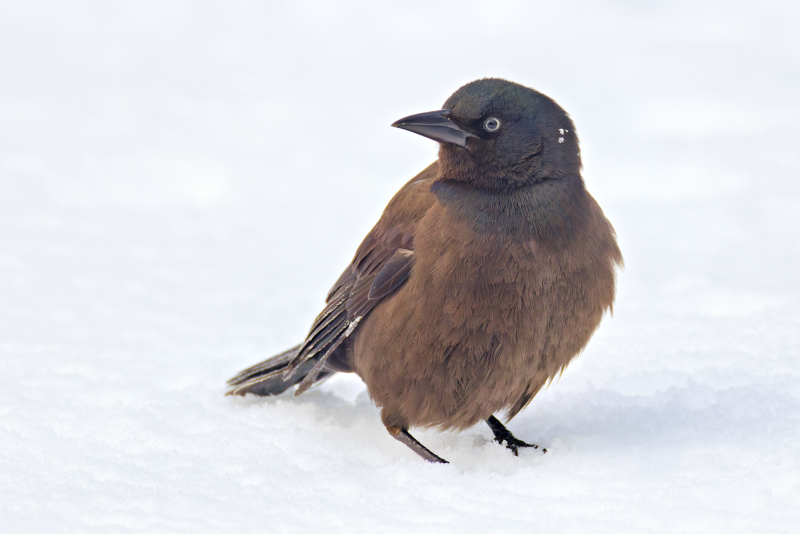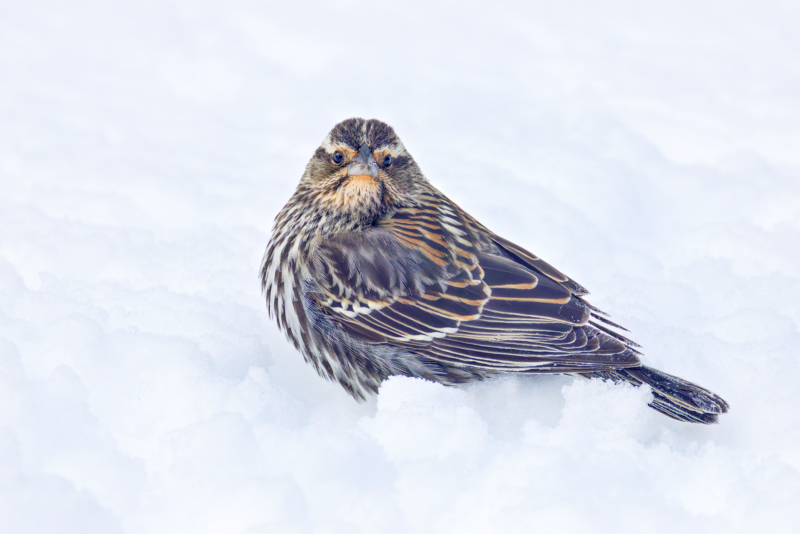For the past three days, I’ve shared photos of birds braving the snow in my Arkansas yard, including a rare Rusty Blackbird and Fox Sparrows. Today, I’m focusing on the Common Grackles and Red-winged Blackbirds that arrived a day after the snowstorm. Their behavior at my feeders was fascinating, though their large numbers created challenges for other birds trying to get food.

Common Grackles
Grackles are striking birds, but they’re known for their aggressive feeder behavior, which often disrupts the feeder ecosystem. Their dominance can force smaller birds to leave, reducing diversity at feeders and consuming food supplies rapidly. Here’s what I observed:
- Aggression at the Feeders: The grackles dominated the space, often pushing smaller birds away.
- Dietary Adaptability: While they primarily eat grains and seeds, these grackles didn’t hesitate to sample whatever was available. Their ability to adapt is key to their survival.
- Impact on Mixed Flocks: They arrived with Red-winged Blackbirds, quickly emptying my feeders and leaving little for other species.

Red-winged Blackbirds
These birds are year-round visitors here in Arkansas and are a familiar sight in many backyards. During harsh winters, their reliance on bird feeders increases significantly as natural food sources dwindle. They arrived alongside the grackles, adding to the flurry of activity at my feeders.
- Flocking in Numbers: Their large flocks often monopolize feeders, creating a spectacle with their synchronized movements, constant chatter, and striking plumage contrasts. Interestingly, their presence can also protect smaller birds from predators like hawks.
- Feeder Preferences: They ate sunflower seeds and suet, which were the only foods I provided. They typically fed on the ground or from platform feeders, making them adaptable and persistent visitors.

Snowfall and Feeder Dynamics
The snowfall clearly increased the urgency for these birds to find food, making my feeders a key resource:
- Competition for Food: Both species created a spectacle with their numbers and behaviors, but their presence posed challenges for maintaining feeder diversity.
- Managing the Takeover: To give smaller birds a chance, I spread food across multiple locations in my yard.
Closing Thoughts
Watching these birds in the snow is always a treat, even when their behaviors present challenges. Feeding birds during winter not only supports their survival but also offers a unique opportunity to observe their fascinating interactions and adaptability. For more tips on feeding winter birds, visit Audubon’s Winter Bird Feeding Guide.
The Common Grackles and Red-winged Blackbirds are a testament to the resilience of wildlife, showcasing their ability to adapt to harsh conditions. Their interactions at the feeders highlight the delicate balance of providing for a variety of species during winter.
